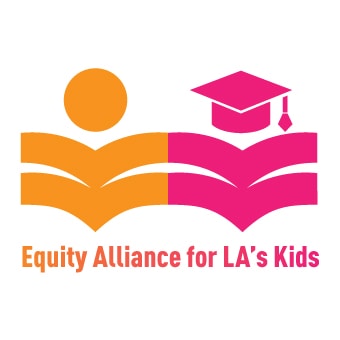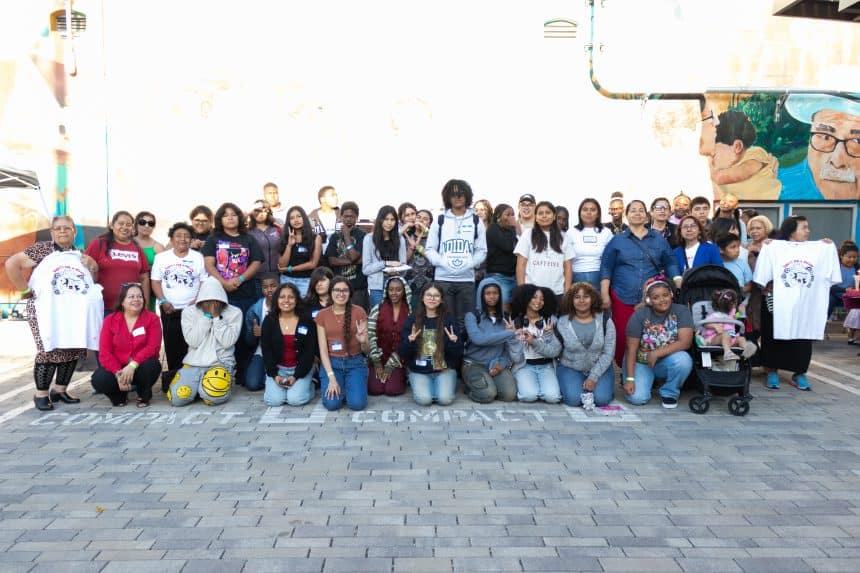This fall, the Equity Alliance for LA’s Kids celebrates a decade of the tool that has improved our public schools’ access to funds that bring more equitable education: the Student Equity Needs Index (SENI).
On August 28, just as the new school year began, about 200 community members gathered at the Community Coalition in South Los Angeles to celebrate the community-won policy that now directs $700 million of Los Angeles Unified School District (LAUSD) budget funds to schools according to their level of need. Students and parents emceed the celebration, which included comments from Dr. Rocio Rivas, LAUSD Board of Education member for District 2, and a representative from District 7.
“The future of SENI in our district is based on the idea that public education is a right,” Rivas said. “We have a responsibility to ensure that our education system serves all students equitably, respects workers’ rights, and promotes full civic participation.”
The celebration was an opportunity to reflect on the long organizing history that brought about SENI, which helped usher in a new, need-based approach to school budgeting and decision making at LAUSD.
The transformation began in 2012, with the passage of California’s Proposition 30 to address a $6 billion budget deficit in K-12 education that disproportionately affected highest-need communities across the state. That set the stage in 2014 for the Local Control Funding Formula, meant to boost district-level control of education funding and direct more of it to low-income, English learner, and foster students.
Building on this momentum, the Equity Alliance for LA’s Kids worked alongside parents, students, community partners, and LAUSD to establish the SENI, then improved it to better measure school community needs and distribute a growing slice of annual funding.
SENI uses 17 weighted indicators to redirect state funds, including factors inside and outside schools that provide a more complete understanding of learning barriers, sketching a roadmap to amend underinvestment in Black and Brown communities.
With SENI, communities decide where and how to spend district funding according to students’ unique needs. Schools use SENI to invest in specialized staff, tutoring programs, teacher training courses, and community engagement initiatives. This school year, Eastman Avenue Elementary received $1.6 million to hire instructional coaches to provide targeted instruction, teacher professional development, and data analysis to improve students’ English proficiency. It also hired a data coordinator to analyze student outcomes and refining instruction. Another school, South Park Elementary, received $2.2 million to hire nine teacher assistants that now provide supervised small-group and one-on-one instruction, including tutoring.
SENI has also helped the district distribute emergency and other resources. During the COVID pandemic, district officials used SENI to decide where to put grab-and-go lunches and vaccination stations, and the index later informed hiring choices when teacher shortages emerged as students returned to class.
Early this year, LAUSD proposed cuts to SENI funds unspent from the previous year, which schools typically use for planning. Usually, the district commits about 80 percent of that carryover money to the principals, but under the proposal, it would have committed only 30 percent. Grassroots support for our organizing led to changes in the plan. Highest-need schools got smaller cuts, assuring up to 70 percent of the money and protecting the need-based approach that is SENI’s foundation.
As we celebrate a decade of SENI, we urge LAUSD to protect it into the future. Black and Brown students cannot, as they have in the past, keep shouldering the bulk of the district’s financial challenges. SENI embodies educational justice through equity. But it requires continued investment so every child, regardless of background, can succeed.





 TAKE ACTION!!
TAKE ACTION!!